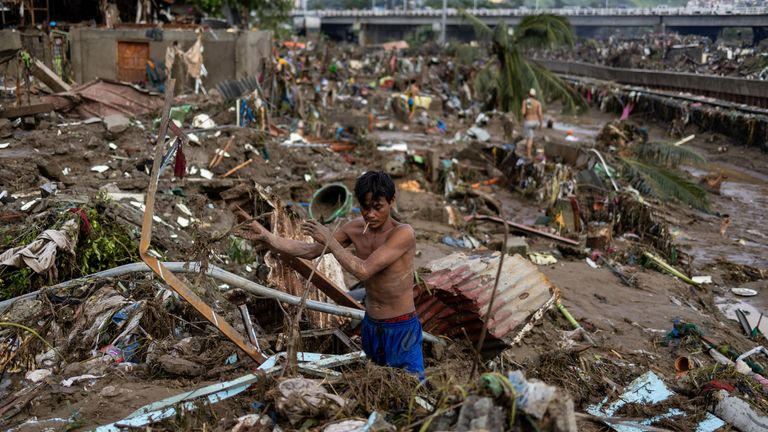Typhoon Kalmaegi, one of the most powerful storms to hit Asia this year, wreaked havoc across Vietnam and the Philippines, leaving a trail of destruction and claiming at least 114 lives. The typhoon made landfall in Vietnam on November 6, with winds reaching up to 92 mph (149 km/h), forcing the closure of six airports and disrupting hundreds of flights. The Vietnamese government has mobilized over 260,000 soldiers and 6,700 vehicles, including six aircraft, for rescue and relief operations. The storm has already caused widespread damage, including flooded homes, uprooted trees, and shattered infrastructure in provinces like Dak Lak and Gia Lai. Local media reported that hundreds of residents in Dak Lak province called for emergency assistance as their homes collapsed or were inundated by floodwaters. Vietnam’s weather bureau warned of potential waves up to 8 meters (26 feet) in the South China Sea, posing a significant threat to coastal communities. Prime Minister Pham Minh Chinh emphasized the urgency of reaching isolated areas to ensure access to food, water, and essential supplies. Meanwhile, the Philippines faced catastrophic flooding, particularly in central regions like Cebu, where entire neighborhoods were wiped out. President Ferdinand Marcos Jr. declared a state of emergency as survivors began the arduous task of cleaning up and rebuilding. The typhoon’s impact extended beyond Vietnam and the Philippines, with Thailand also bracing for flash floods and landslides. The storm serves as a stark reminder of the increasing intensity of weather events in the region, prompting calls for heightened preparedness and resilience.
